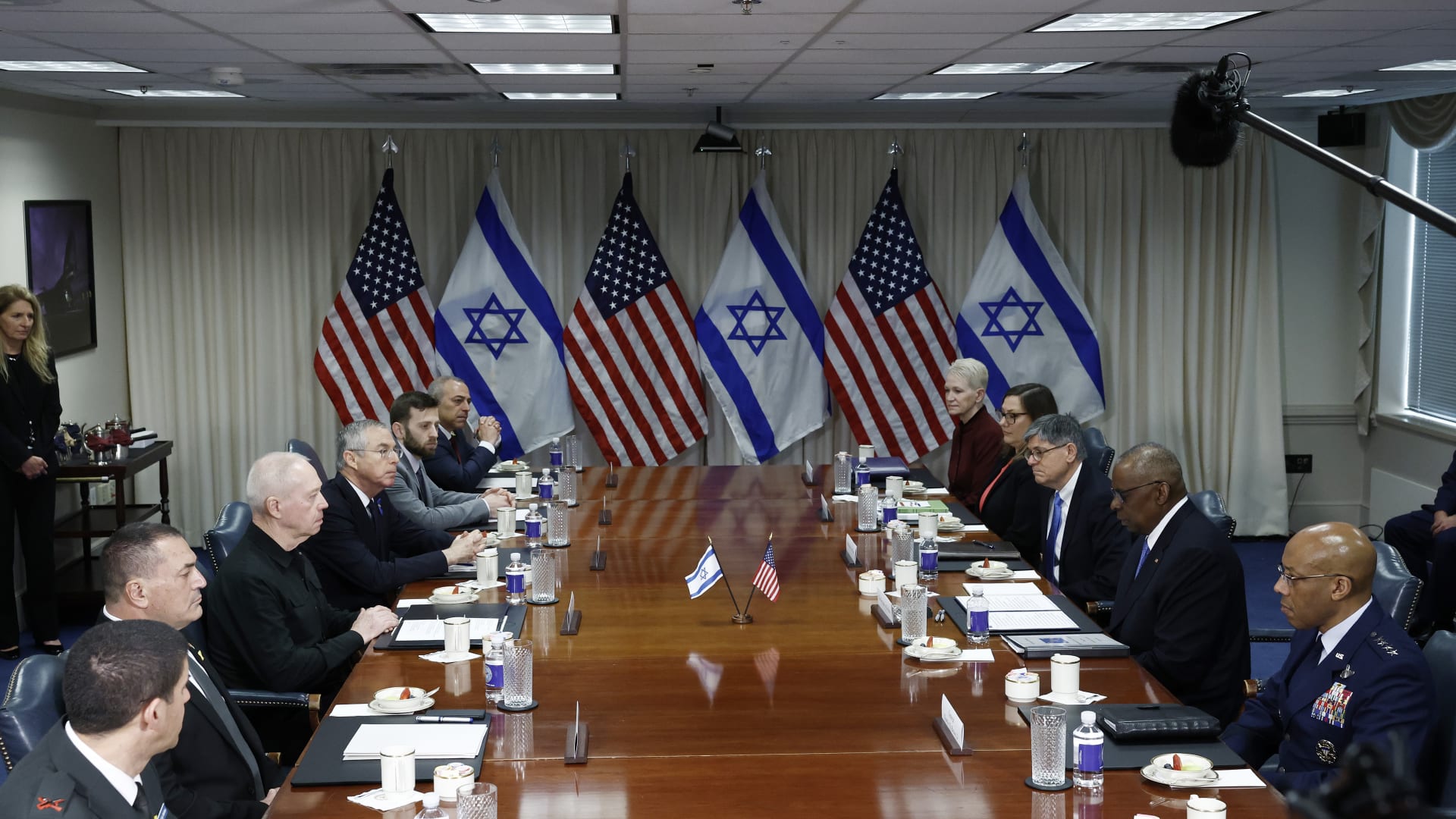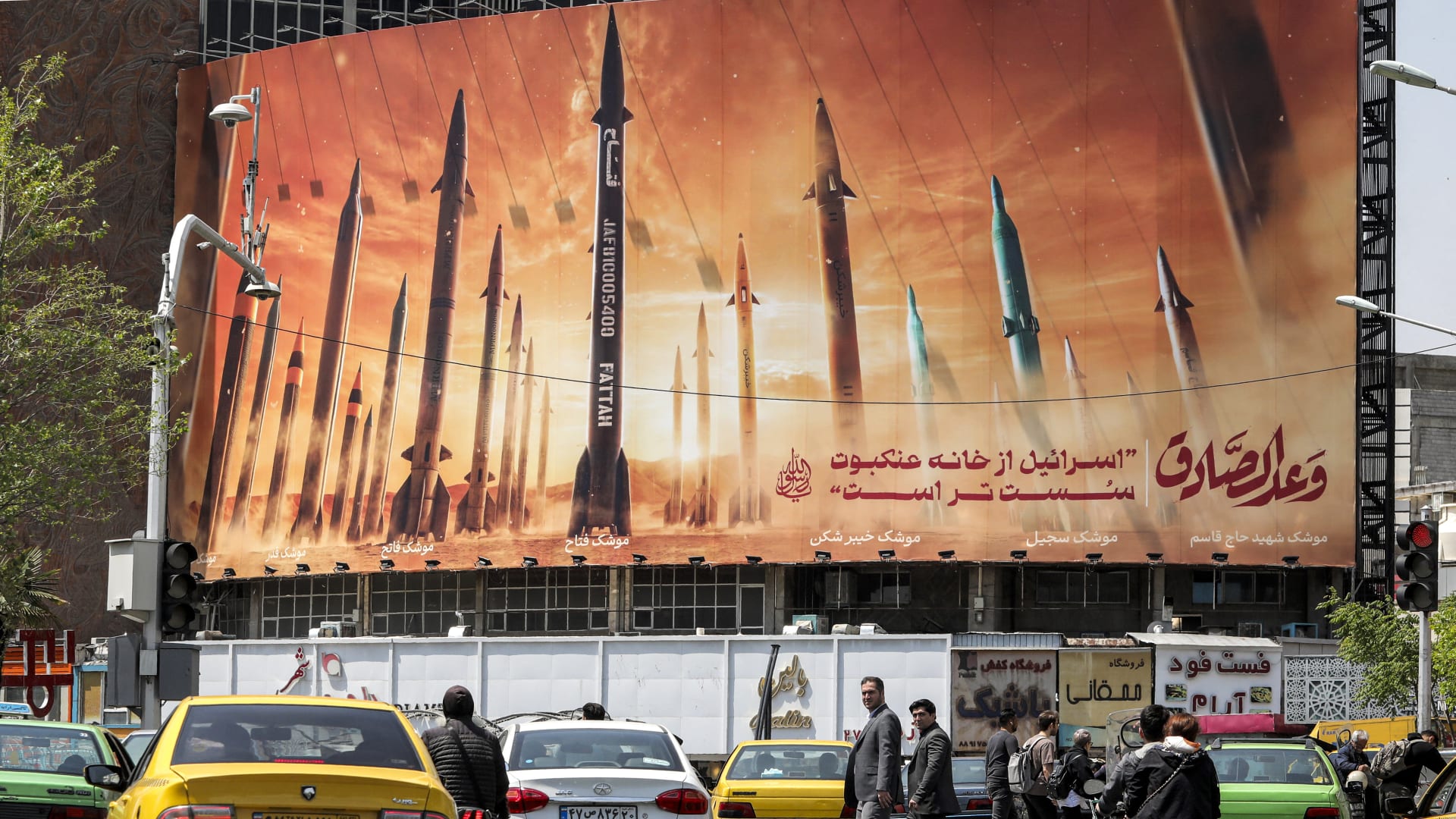The question of the distance between Iran and Israel is far more complex than a simple measurement of miles on a map. While a geographical calculation might offer a straightforward number, the true "distance" between these two nations encompasses a vast array of geopolitical, ideological, strategic, and historical factors that shape their volatile relationship. It's a distance measured not just in kilometers, but in missile ranges, proxy networks, diplomatic isolation, and deeply entrenched narratives.
Understanding this multifaceted separation is crucial for anyone seeking to grasp the dynamics of the Middle East. This article delves into the various layers of this "distance," exploring not only the physical gap but also the strategic implications, the role of proxies, military capabilities, and the broader international context that defines one of the world's most enduring and dangerous rivalries.
Table of Contents
- Unpacking the Geographical Distance Between Iran and Israel
- Beyond Miles: The Strategic Importance of Proximity
- The Proxy Network: Shortening the Perceived Distance
- Missile Capabilities: Bridging the Gap
- Historical Context and Ideological Divide
- International Diplomacy and Regional Dynamics
- The Human Cost: Implications for Regional Populations
- Conclusion: A Complex Web of Interconnected Realities
Unpacking the Geographical Distance Between Iran and Israel
When we talk about the direct geographical distance between Iran and Israel, we are looking at a substantial stretch of land. As the crow flies, the shortest direct line between the two countries, for instance, from Tehran to Jerusalem, is approximately 1,000 to 1,200 kilometers (around 620 to 750 miles). This measurement, however, is a theoretical one, as there is no shared border between Iran and Israel. Instead, several nations lie between them, including Iraq, Syria, and Jordan. These intermediary states are not merely empty spaces; they are active geopolitical arenas, often serving as battlegrounds or strategic corridors for various state and non-state actors. The absence of a direct border means that any direct military confrontation would necessitate traversing or overflying third-party territories, adding layers of complexity and international ramifications to any potential conflict. This geographical reality dictates the strategic planning for both nations, influencing everything from missile development to the establishment of proxy forces.Beyond Miles: The Strategic Importance of Proximity
The physical distance between Iran and Israel, while significant, is increasingly overshadowed by the strategic proximity fostered by modern military capabilities and geopolitical maneuvering. In today's interconnected world, a thousand kilometers can be traversed in minutes by a ballistic missile, or effectively negated by a well-established network of proxy forces. This means that even without a shared land border, the two nations operate within a dangerously close strategic environment. The concept of "proximity" in this context extends beyond mere geography to include the reach of influence, the deployment of advanced weaponry, and the ideological battle for regional dominance. Both Iran and Israel perceive each other as existential threats, leading to a continuous strategic competition that plays out across the Middle East. This competition involves intelligence gathering, covert operations, and a constant arms race, all aimed at gaining an advantage over the perceived adversary, irrespective of the physical miles separating their capitals.Airspace and Flight Paths
The airspace between Iran and Israel is a critical element in understanding their strategic relationship. While direct flights are non-existent due to political hostilities, the potential for military overflights is a constant consideration. Any direct aerial engagement or strike would require traversing the airspace of countries like Iraq, Syria, or Jordan. This raises complex questions of international law, sovereignty, and the potential for drawing other nations into a conflict. For instance, Syria's airspace has become a highly contested zone, with various international actors operating within it, making it a volatile corridor. Iran's ability to project power via air, or Israel's capability to conduct long-range strikes, hinges on navigating these complex airspaces, often requiring careful diplomatic maneuvering or covert operations to avoid detection or confrontation with third parties. The presence of advanced air defense systems in the region further complicates these flight paths, turning what might seem like a direct route into a perilous journey.The Role of Naval Power and Maritime Routes
Beyond land and air, the maritime domain also plays a crucial role in the strategic distance between Iran and Israel. Both nations possess naval capabilities that extend their reach across vital waterways. Iran, with its extensive coastline on the Persian Gulf and the Gulf of Oman, controls the Strait of Hormuz, a critical chokepoint for global oil shipments. Its naval presence in the Red Sea has also been a point of concern for Israel, particularly regarding the security of maritime trade routes leading to the Suez Canal. Israel, on the other hand, relies heavily on maritime trade and has a significant naval presence in the Mediterranean and the Red Sea. The Red Sea, in particular, is a strategic corridor connecting Israel to Asia and the Indian Ocean. Any disruption to these maritime routes, whether through direct naval confrontation, mining, or attacks on shipping, could have severe economic and strategic consequences for both nations, effectively "shortening" the perceived distance by bringing their strategic interests into direct contact far from their land borders.The Proxy Network: Shortening the Perceived Distance
Perhaps the most significant factor in bridging the geographical distance between Iran and Israel is the extensive network of proxy forces. Iran has meticulously cultivated and supported various non-state actors across the Middle East, effectively creating a "ring of fire" around Israel. Groups like Hezbollah in Lebanon, Hamas and Palestinian Islamic Jihad in Gaza, and various Shiite militias in Syria and Iraq, along with the Houthi movement in Yemen, serve as extensions of Iranian influence and military power. These proxies provide Iran with strategic depth and the ability to project power without direct military engagement, thereby bypassing the geographical constraints. For Israel, this means that the threat is not confined to Iran's borders but is present on its own immediate frontiers. The existence of these proxy groups transforms the theoretical distance into a tangible, immediate security challenge, as attacks can originate from neighboring territories, often with Iranian weaponry and training. This strategy has fundamentally altered the geopolitical landscape, making the conflict a regional one rather than a distant bilateral rivalry.Missile Capabilities: Bridging the Gap
The development of advanced missile capabilities by both Iran and Israel has effectively rendered the physical distance between them almost irrelevant in terms of military reach. Iran possesses a diverse arsenal of ballistic and cruise missiles, many of which are capable of reaching targets deep within Israel. This capability is a cornerstone of Iran's deterrence strategy and its ability to project power. Reports from various intelligence agencies and think tanks, such as the Center for Strategic and International Studies (CSIS), consistently highlight the increasing range and precision of Iranian missiles. Conversely, Israel has developed one of the world's most sophisticated multi-layered air defense systems, including the Iron Dome for short-range rockets, David's Sling for medium-range threats, and the Arrow system designed to intercept long-range ballistic missiles. This defensive shield is crucial for Israel's security, but the constant development of offensive capabilities by Iran necessitates continuous upgrades and vigilance. The existence of these long-range strike capabilities means that even with a thousand kilometers separating them, the threat of direct attack remains ever-present, making the "distance" a matter of minutes, not miles.Cyber Warfare: A Borderless Battlefield
In the 21st century, the concept of distance is further eroded by the rise of cyber warfare. Both Iran and Israel are recognized as leading actors in the realm of state-sponsored cyber operations. Unlike conventional military engagements, cyber attacks transcend geographical boundaries, allowing for direct assaults on critical infrastructure, government networks, and even private citizens, without the need for physical proximity. This form of warfare is often covert, difficult to attribute, and can cause significant disruption and damage. Reports from cybersecurity firms and intelligence agencies frequently detail alleged cyber exchanges between the two nations, targeting everything from nuclear facilities to financial institutions. The borderless nature of cyber warfare means that the "distance" between Iran and Israel is effectively zero in the digital realm, making it a constant, low-level battlefield where the rules of engagement are still evolving, but the potential for escalation is ever-present.Nuclear Ambitions: The Ultimate Game Changer
Perhaps the most profound factor influencing the perceived distance and strategic calculations between Iran and Israel is the issue of nuclear capabilities. Iran's nuclear program, which it insists is for peaceful purposes, is viewed by Israel and many Western nations as a potential pathway to developing nuclear weapons. This prospect is considered an existential threat by Israel, which is widely believed to possess its own undeclared nuclear arsenal. The development or even the perceived capability of nuclear weapons fundamentally alters the strategic balance and shortens the "distance" in terms of destructive potential. The International Atomic Energy Agency (IAEA) closely monitors Iran's nuclear activities, and international diplomacy, such as the Joint Comprehensive Plan of Action (JCPOA), has aimed to prevent proliferation. However, the ongoing tensions and the "shadow war" between the two nations are heavily influenced by the specter of nuclear arms, making the strategic distance between them incredibly short and fraught with unparalleled risks.Historical Context and Ideological Divide
The current animosity between Iran and Israel is rooted in a complex historical evolution and a deep ideological divide. Prior to the 1979 Iranian Revolution, Iran under the Shah maintained relatively cordial, albeit covert, relations with Israel. However, the establishment of the Islamic Republic brought about a radical shift. The new Iranian regime adopted an anti-Zionist stance, viewing Israel as an illegitimate entity and a Western outpost in the Muslim world. This ideological opposition, rooted in revolutionary principles and a commitment to Palestinian liberation, became a cornerstone of Iran's foreign policy. For Israel, Iran's revolutionary rhetoric, its pursuit of regional hegemony, and its support for groups committed to Israel's destruction represent an intolerable threat. This fundamental ideological clash, more than any geographical separation, defines the "distance" between them, fostering a climate of mutual distrust and animosity that fuels the ongoing strategic competition and prevents any possibility of normalization. Understanding this historical and ideological chasm is essential for comprehending the depth of their rivalry.International Diplomacy and Regional Dynamics
The "distance" between Iran and Israel is not just a bilateral issue; it is heavily influenced by international diplomacy and broader regional dynamics. Major global powers, including the United States, European Union, Russia, and China, all have vested interests in the stability of the Middle East and often play a role in mediating or exacerbating tensions between Iran and Israel. The US, in particular, has been a staunch ally of Israel and a primary antagonist of Iran, imposing sanctions and leading international efforts to curb Iran's nuclear program and regional influence. Recent developments, such as the Abraham Accords, which saw several Arab nations normalize relations with Israel, have further reshaped the regional landscape, creating new alliances and potentially isolating Iran. These diplomatic maneuvers and shifting alliances effectively alter the strategic "distance" by creating new security architectures and changing the calculus of power. The international community's efforts to de-escalate tensions, through sanctions, negotiations, or even military deterrence, constantly redefine the boundaries and risks of this complex rivalry.The Human Cost: Implications for Regional Populations
While discussions often focus on geopolitical strategies and military capabilities, it is crucial to remember the profound human cost of the perceived "distance" and ongoing tensions between Iran and Israel. The constant state of animosity and the potential for conflict cast a long shadow over the lives of millions in the region. Populations in Israel live under the threat of rocket attacks from proxies like Hamas and Hezbollah, leading to trauma, displacement, and the need for extensive civil defense measures. In Iran, the economic sanctions imposed by the international community, partly due to its nuclear program and regional actions, have severely impacted the daily lives of ordinary citizens, leading to economic hardship and social unrest. Beyond their borders, the proxy conflicts fueled by this rivalry in Syria, Yemen, and Iraq have resulted in humanitarian crises, mass displacement, and immense suffering for civilian populations. The "distance" between Iran and Israel, therefore, translates into very real and devastating consequences for the people caught in the crossfire, highlighting the urgent need for de-escalation and peaceful resolutions.Conclusion: A Complex Web of Interconnected Realities
In conclusion, the question of "how far is the distance between Iran and Israel" yields an answer far more intricate than a simple geographical measurement. While approximately 1,000 to 1,200 kilometers separate their core territories, this physical gap is profoundly diminished by strategic realities. The reach of Iran's missile capabilities, the extensive network of proxy forces operating on Israel's borders, the borderless nature of cyber warfare, and the looming shadow of nuclear ambitions all serve to drastically shorten the effective "distance" between these two formidable adversaries. This is a rivalry shaped by deep historical grievances, ideological clashes, and a constant struggle for regional influence, all playing out against a backdrop of complex international dynamics. Understanding this multifaceted "distance" is paramount for anyone seeking to comprehend the volatile landscape of the Middle East. It underscores why the relationship between Iran and Israel remains one of the most critical and dangerous flashpoints in global geopolitics. The potential for miscalculation and escalation is ever-present, making it imperative for policymakers and the public alike to grasp the intricate layers of this strategic proximity. We encourage you to share your thoughts on this complex topic in the comments below, and explore other articles on our site that delve into the nuances of Middle Eastern geopolitics.Related Resources:



Detail Author:
- Name : Ms. Della Quitzon
- Username : lspinka
- Email : delfina06@waelchi.com
- Birthdate : 2004-08-10
- Address : 89718 Bonnie Neck Suite 361 Casperfurt, AK 32204
- Phone : +19403208189
- Company : Auer-Lehner
- Job : Healthcare Practitioner
- Bio : Dicta minima sit ipsam. Rerum adipisci omnis sequi adipisci nisi. Qui nesciunt provident fugit iusto magni et.
Socials
twitter:
- url : https://twitter.com/thalia.kshlerin
- username : thalia.kshlerin
- bio : Fuga ut nihil consequatur non. In fuga magnam ea qui natus aut blanditiis. Velit ipsa dolor odio eum perferendis qui sapiente.
- followers : 4482
- following : 1119
linkedin:
- url : https://linkedin.com/in/thaliakshlerin
- username : thaliakshlerin
- bio : Error maxime vel commodi incidunt et.
- followers : 4748
- following : 928
tiktok:
- url : https://tiktok.com/@thalia_xx
- username : thalia_xx
- bio : Id neque voluptates sed sint at fugit dolor.
- followers : 3765
- following : 1639
instagram:
- url : https://instagram.com/thalia.kshlerin
- username : thalia.kshlerin
- bio : Cum dolores aut veritatis tempore. Quia et tempora et.
- followers : 1340
- following : 2873
facebook:
- url : https://facebook.com/thalia_kshlerin
- username : thalia_kshlerin
- bio : Molestiae est ea optio consequatur. Et est praesentium illo qui ad.
- followers : 4626
- following : 2176